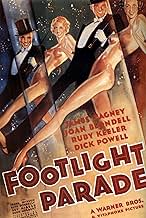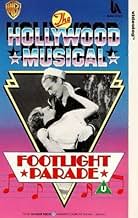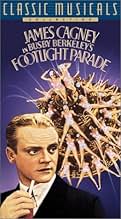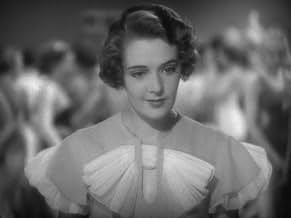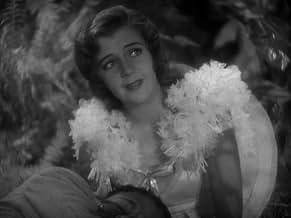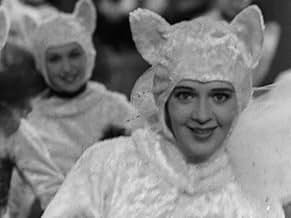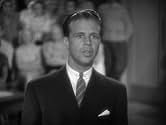Ajouter une intrigue dans votre langueChester Kent struggles against time, romance, and a rival's spy to produce spectacular live "prologues" for movie houses.Chester Kent struggles against time, romance, and a rival's spy to produce spectacular live "prologues" for movie houses.Chester Kent struggles against time, romance, and a rival's spy to produce spectacular live "prologues" for movie houses.
- Réalisation
- Scénario
- Casting principal
- Récompenses
- 3 victoires au total
- Chorus Girl
- (non crédité)
- Chorus Girl
- (non crédité)
Avis à la une
Cagney is even doing a bit of singing in this one and also quite an amount of dancing. And it needs to be said that he was not bad at it. He plays the role with a lot of confidence. He apparently had some dancing jobs in his early life before his acting career started to take off big time, so it actually isn't a weird thing that he also took on some musical acting roles in his career. He obviously also feels at ease in this totally different genre than most people are accustomed to seeing him in.
The movie is directed by Lloyd Bacon, who was perhaps among the best and most successful director within the genre. His earliest '30's musicals pretty much defined the musical genre and he also was responsible for genre movies such as "42nd Street". His musicals were always light and fun to watch and more comedy like than anything else really. '30's musicals never were really about its singing, this was something that more featured in '40's and later made musicals, mainly from the MGM studios.
As usual it has a light and simple story, set in the musical world, that of course is also predictable and progresses in a formulaic way. It nevertheless is a fun and simple story that also simply makes this an entertaining movies to watch. So do the characters and actors that are portraying them. Sort of weird though that that the total plot line of the movie gets sort of abandoned toward the end of the movie, when the movie only starts to consists out of musical number routines.
The musical moments toward the ending of the movie are also amusing and well done, even though I'm not a too big fan of the genre itself. Once again the musical numbers also feature a young Billy Barty. he often played little boys/babies/mice and whatever more early on in his career, including the movie musical "Gold Diggers of 1933", of one year earlier.
A recommendable early genre movie.
8/10
http://bobafett1138.blogspot.com/
Watching it again tonight, I was, however, struck yet once again by the genius of Busby Berkeley in staging the last three numbers, the "prologues." Most remarkable of a very remarkable trio for me is "Beside a waterfall." It just keeps building and building and building. Yes, of course, some of the shots of the women in the water are very erotic. It was 1933, after all, and before the Hayes Code. Berkeley and Warner Brothers understood that pretty women posed erotically had a real appeal to men,
------------------------------------
I watched the end of this movie again this morning. Perhaps I paid closer attention to this number this time, perhaps I was just in the right "mood." Either way, I marveled at the suggestiveness of so much of it. Those jets of water spurting up - I use the verb advisedly - between the swimming women's legs. All those shots of women opening and closing their legs. It was remarkably erotic on my 46" tv screen. What must it have been like in 1933 on huge movie theater screens in the era before multiplexes????
==========================================
But these erotic poses are not JUST erotic poses. The number keeps building and building and building. What will he do next, you keep wondering? Oh, that. But "that" is even more incredible than what has come before. By the time you get to the end of this number, you're exhausted, not just physically and erotically, but imaginatively as well. How could anyone have maintained and built on that suspense for 10 whole minutes? I can't tell you, but Berkeley did.
Third of the three prologues, "Shanghai Lil," is definitely not something that could have been filmed the same way just a year or two later when the Production Code was put in force. We see an opium den, a lot of prostitutes, at least one interracial couple, etc.
Having watched it again tonight, I will add that this is a strange "musical." There is almost no music for the first hour and a half. It's all in the three closing numbers. But what numbers!
First-rate Busby Berkeley musical from Warner Bros. with a terrific cast and the wonderful choreography Berkeley was known for. Most of the musical numbers are saved for the last half-hour but they're all great. James Cagney and Joan Blondell are lots of fun. They always had perfect chemistry. There's also a lot of snappy pre-Code lines, particularly from Blondell. Dick Powell and Ruby Keeler are also enjoyable. Nice support from solid character actors Frank McHugh, Guy Kibbee, Arthur Hohl, and Hugh Herbert. Fast-paced and highly entertaining. Essential for fans of Berkeley or the great leads.
Sure, Warner Bros. tries to cover the orgy with the fig leaf of two cheerful innocents played by a sappy Dick Powell and a virginal Ruby Keeler. But it doesn't work, because everyone else gets in on the fun, including that human buzz-saw Jimmy Cagney and everyone's favorite sassy dame Joan Blondell. Director Lloyd Bacon proves too he knows what to do, giving us an eyeful of Blondell endlessly rolling and unrolling her hosiery, while the writers pepper the conversation with suggestive one-liners. Yeah, it's a great movie-- good enough to help bring down the heavy hand of censorship the following year, and put an end to damp dreams like "Beside a Waterfall". But not even the Watchdogs of Public Morality could stop Berkeley's deliriously suggestive pageantry that would live on at even that most repressed of studios, MGM. Sure, Astaire-Rogers may have been more graceful and a whole lot more chaste, no doubt producing more sheer polish-- still and all, don't let this unabashedly pagan celebration pass you by. As they say around the owl cage, it's a real hoot.
Le saviez-vous
- AnecdotesFirst film where James Cagney dances - showing off his vaudeville and stage experience as a song-and-dance man. Cagney lobbied Warner Bros. to play this role. He would show off these talents to their fullest in La Glorieuse Parade (1942).
- GaffesAfter the "By A Waterfall" prologue ends, the film cuts to the audience giving an animated and thunderous applause, but in the balcony there is no applause or reaction. In fact, there is no movement whatsoever. They are perfectly still which indicates that a photo or painting was used for the balcony audience and then merged with the live theatre audience. The same photo/painting was also used for the "Shanghai Lil" balcony audience.
- Citations
Nan Prescott: You scram, before I wrap a chair around your neck!
Vivian Rich: [Angrily] It's three o'clock in the morning - where do you want me to go?
[Nan starts to speak, but Vivian immediately cuts her off]
Vivian Rich: You cheap stenographer...
Nan Prescott: Outside, countess. As long as they've got sidewalks YOU'VE got a job.
[Shoves her out, gives her a swift kick in the rump, and slams the door behind her]
- Versions alternativesThere is an Italian edition of this film on DVD, distributed by DNA srl, "VIVA LE DONNE! (1933) + AMORE IN OTTO LEZIONI (1936)" (2 Films on a single DVD), re-edited with the contribution of film historian Riccardo Cusin. This version is also available for streaming on some platforms.
- ConnexionsEdited into Busby Berkeley and the Gold Diggers (1969)
- Bandes originalesA Vision of Salome
(1908) (uncredited)
Music by J. Bodewalt Lampe
Played during the prologue scene in the movie theater
Meilleurs choix
Détails
Box-office
- Budget
- 703 000 $US (estimé)
- Montant brut mondial
- 276 $US
- Durée
- 1h 44min(104 min)
- Couleur
- Rapport de forme
- 1.37 : 1



